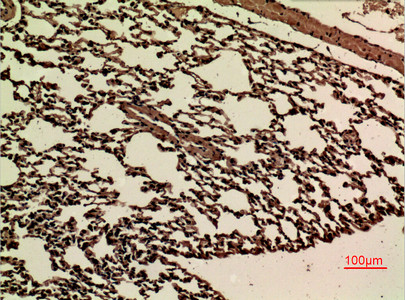Search Thermo Fisher Scientific
Product Details
PA5-67831
Species Reactivity
Host/Isotype
Class
Type
Immunogen
Conjugate
Form
Concentration
Purification
Storage buffer
Contains
Storage conditions
Shipping conditions
RRID
Product Specific Information
Predicted to react with Mouse and Rat samples.
Target Information
Tight junctions represent one mode of cell-to-cell adhesion in epithelial or endothelial cell sheets, forming continuous seals around cells and serving as a physical barrier to prevent solutes and water from passing freely through the paracellular space. The protein encoded by this immunoglobulin superfamily gene member is localized in the tight junctions between high endothelial cells. It acts as an adhesive ligand for interacting with a variety of immune cell types and may play a role in lymphocyte homing to secondary lymphoid organs.
For Research Use Only. Not for use in diagnostic procedures. Not for resale without express authorization.
References (0)
Bioinformatics
Protein Aliases: AU016127; CD322; JAM-2; JAM-B; JAM-IT/VE-JAM; junction adhesion molecule 2; junction adhesion molecule B; junction cell adhesion molecule 2; Junctional adhesion molecule 2; Junctional adhesion molecule B; RP23-253E17.2; Vascular endothelial junction-associated molecule; VE-JAM
Gene Aliases: 1110002N23Rik; 2410030G21Rik; 2410167M24Rik; C21orf43; CD322; JAM-2; JAM-B; JAM2; JAMB; Jcam2; PRO245; UNQ219/PRO245; VE-JAM; VEJAM
UniProt ID: (Human) P57087, (Mouse) Q9JI59
Entrez Gene ID: (Human) 58494, (Mouse) 67374, (Rat) 619374

Performance Guarantee
If an Invitrogen™ antibody doesn't perform as described on our website or datasheet,we'll replace the product at no cost to you, or provide you with a credit for a future purchase.*
Learn more
We're here to help
Get expert recommendations for common problems or connect directly with an on staff expert for technical assistance related to applications, equipment and general product use.
Contact tech support


